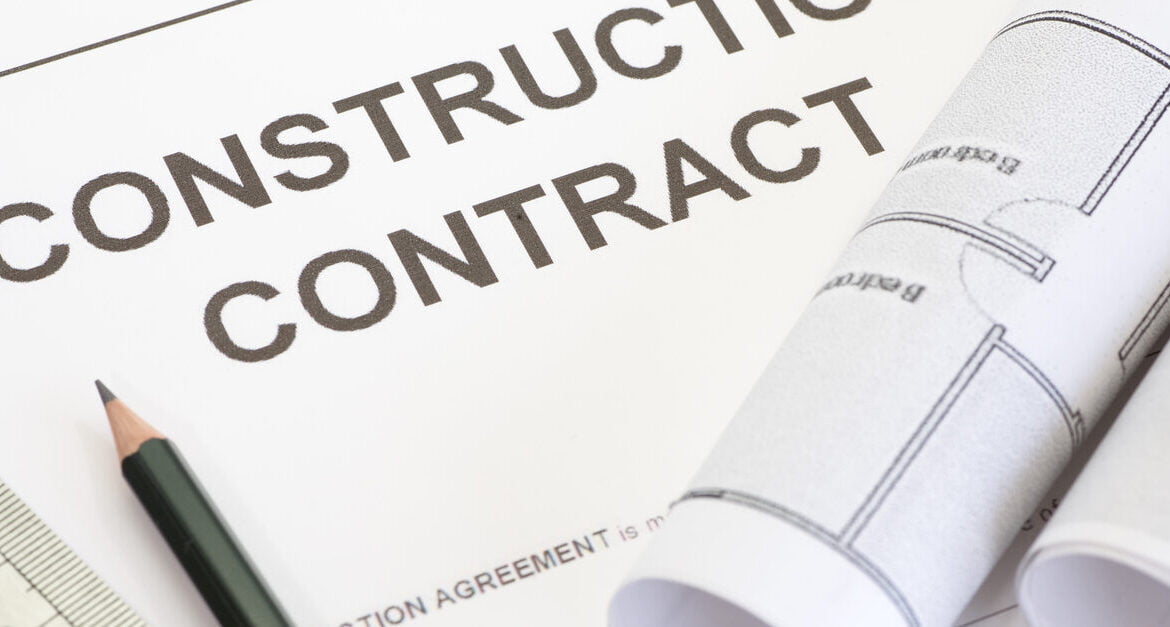

Crucial Truth: Essential Reasons Why Retention Money Can Make or Break Construction Contracts
Introduction
In the dynamic landscape of construction projects, retention money serves as a critical financial tool aimed at ensuring quality delivery, managing risks, and safeguarding project interests. This article delves into the intricacies of retention money in construction contracts, exploring its definitions, purposes, implications, challenges, and best practices for effective management.
In the complex and often high-stakes world of construction, financial safeguards are critical to ensure that all parties fulfill their obligations. One of the most pivotal mechanisms employed to achieve this equilibrium is retention money. Retention money in construction contracts is both a powerful and controversial tool. Its proper use can help protect the interests of employers, encourage performance by contractors, and maintain construction quality. However, when misapplied or misunderstood, it can result in financial strain, legal disputes, and delayed project closeouts.
Retention money serves as a form of financial security retained by the employer or project owner from the payment due to the contractor during the execution of a construction project. Typically, a percentage (commonly 5-10%) is withheld from each interim payment and may only be released after the successful completion of the project, and in some cases, after a defect liability period. While this may seem fair in principle, the practice carries both legal and financial implications for all stakeholders involved.
From an employer’s standpoint, retention money acts as insurance that the contractor will correct any defects and finalize all aspects of the job. If the contractor fails to comply, the employer can use the retained funds to complete or rectify the outstanding work. Conversely, contractors often view retention as an unfair restraint on their cash flow, particularly in long-term projects where significant amounts can be tied up for extended periods. This tension between safeguarding interests and maintaining fair cash flow is central to most disputes surrounding retention money in construction contracts.
Globally, and in Nigeria specifically, the use of retention money is widespread in both public and private sector projects. However, there is a growing call for reform to ensure greater transparency, fairness, and accountability in how retention is handled. In Nigeria, while the concept is acknowledged in practice, it is often not thoroughly regulated under specific statutory provisions. This regulatory gap leaves parties to rely heavily on the specific contract terms agreed upon, whether under standard forms such as FIDIC or bespoke agreements.
In the Nigerian context, many contractors—especially small and medium-sized firms—suffer significantly from delayed release or outright non-payment of retention funds. These practices can cripple operational efficiency, discourage contractors from taking on new projects, and even lead to litigation. More alarmingly, there are scenarios where employers exploit retention provisions as a cost-saving mechanism rather than as a quality assurance strategy. Therefore, both legal practitioners and construction professionals must have a nuanced understanding of how retention money operates in different contractual scenarios.
Further complicating matters is the role of third parties, such as subcontractors and suppliers, who may be indirectly affected by retention clauses without having any recourse to enforce their rights. If a main contractor is denied retention release, it cascades down to everyone involved in the value chain. This ripple effect underlines the importance of proper contractual drafting, negotiation, and risk allocation at the outset of any construction project.
Another important consideration is the timeline and method for the release of retention. In many standard contracts, retention is released in two stages: one at practical completion and the other after the defect liability period ends. However, the lack of clarity or defined timelines often leads to disputes, requiring courts or arbitration panels to interpret ambiguous clauses. The courts in Nigeria have occasionally weighed in on such matters, emphasizing the need for contract clarity and fairness in practice.
Moreover, with the recent focus on enhancing infrastructure through private-public partnerships (PPPs) and international collaborations, Nigeria’s construction sector is becoming more sophisticated. This evolution necessitates a parallel development in contractual practices, particularly around retention money, to align with global standards and expectations.
This article will explore the legal foundation, operational mechanics, contractual interpretation, challenges, and proposed reforms relating to retention money in construction contracts. We will delve into key Nigerian case law, standard construction contract forms (like FIDIC, JCT, and Nigerian-specific templates), and the practical realities contractors and employers face. Whether you are a legal practitioner, project manager, contractor, or public sector administrator, understanding the implications of retention money is essential for navigating construction projects successfully.
The goal is not merely academic analysis but to provide actionable insights and clarity that can help parties prevent disputes, secure compliance, and promote equitable business practices. Retention money is too important to be relegated to a boilerplate clause in a contract—it deserves strategic thought, proper implementation, and vigilant enforcement.
Understanding Retention Money in Construction Contracts
Retention money, also known as retention or retentions, refers to a portion of the contract sum withheld by the client (or project owner) from the contractor until the satisfactory completion of the construction project. The retention amount is typically a percentage of the total contract value and is retained as security against defects, incomplete work, or non-compliance with contractual obligations.
Purposes of Retention Money
Retention money serves several important purposes in construction contracts:
1. Quality Assurance: It incentivizes contractors to deliver work of high quality by withholding a portion of the contract sum until the project meets specified standards and requirements.
2. Risk Management: Retention money mitigates the risk of defects, incomplete work, or non-performance by providing financial security to the client against potential rectification costs or project deficiencies.
3. Completion Assurance: It ensures that contractors fulfill their contractual obligations, complete outstanding work, and rectify defects within the defects liability period before the release of retention funds.
4. Cash Flow Management: Retention funds provide liquidity and financial flexibility to cover expenses, manage cash flow, and sustain operations throughout the project duration.
Implications of Retention Money in Construction Contracts
The implications of retention money in construction contracts impact both contractors and clients:
i. Contractor Perspective: Retention funds tied up can affect cash flow, liquidity, and working capital, potentially limiting resources for ongoing projects, payments to subcontractors, or investment in business growth.
ii. Client Perspective: Retaining retention funds ensures protection against potential risks, defects, or non-compliance with contractual obligations, safeguarding project investments and ensuring satisfactory project outcomes.
Challenges in Managing Retention Money
Despite its benefits, retention money in construction contracts poses several challenges:
1. Cash Flow Constraints: Retention funds withheld can strain contractor finances, impacting the ability to cover operational costs, procure materials, or pay subcontractors timely.
2. Administrative Burden: Managing retention accounts, reconciling retention balances, and ensuring compliance with release conditions can involve administrative complexities and additional paperwork.
3. Dispute Resolution: Disputes may arise over the release of retention funds, timing of release, or disagreements regarding the completion of work or rectification of defects.
Best Practices for Managing Retention Money
To effectively manage retention money in construction contracts and mitigate associated challenges, stakeholders can adopt best practices:
1. Clear Contractual Terms: Define retention provisions clearly in construction contracts, including percentage withheld, conditions for release, defects liability periods, and procedures for dispute resolution.
2. Documentation and Records: Maintain accurate records of retention accounts, contract documents, completion certificates, defects notifications, and any agreements related to the release of retention funds.
3. Performance Monitoring: Monitor project progress, quality of workmanship, and compliance with contractual specifications to facilitate timely release of retention funds upon satisfactory completion.
4. Negotiation and Communication: Engage in open communication and proactive negotiation with clients, contractors, and stakeholders to resolve issues, clarify expectations, and facilitate the release of retention funds.
5. Financial Planning: Incorporate retention management into financial planning strategies, including cash flow forecasts, budgeting for retention impacts, and contingency planning for unforeseen delays or disputes.
Steps in Releasing Retention Money
Releasing retention money in construction contracts involves a structured approach to ensure compliance with contractual obligations and facilitate project closure:
1. Completion Verification: Verify completion of all contract works, including rectification of defects, compliance with specifications, and issuance of completion certificates or final inspection reports.
2. Defects Liability Period: Allow for the defects liability period specified in the contract to expire, during which contractors are obligated to rectify any defects identified post-completion.
3. Final Certification: Obtain formal certification from clients, consultants, or contract administrators confirming satisfactory completion of all contractual obligations and compliance with retention release conditions.
4. Release Authorization: Issue formal instructions or release certificates authorizing the release of retention funds in accordance with contractual terms, completion criteria, and verification of compliance.
5. Financial Settlement: Facilitate the financial settlement process, including reconciling retention balances, processing payment transfers, and updating financial records to reflect the release of retention funds.
Conclusion
Balancing Interests and Fair Practice: Reforming Retention Money in Construction Contracts
As this article has illustrated, retention money in construction contracts plays a central role in ensuring accountability, quality, and completion in construction projects. While its intent is rooted in good faith and prudence, the practical application of retention mechanisms often leads to friction, unfair delays, and at times, prolonged legal battles. There’s no doubt that retention serves a protective function—but the challenge lies in how to balance that protection with fairness, liquidity, and trust among contracting parties.
In the Nigerian construction industry, the issue of retention is particularly sensitive. Contractors, especially smaller firms, often lack the leverage to challenge unfair terms or delays in the release of retained funds. This economic imbalance, when unchecked, can stifle innovation, discourage risk-taking, and weaken the overall health of the sector. At the same time, employers too face legitimate concerns, such as defective work, non-compliance with specifications, and unreliable contractors—risks that retention money is designed to hedge against.
A crucial takeaway is the importance of clear contractual provisions. Every construction contract that incorporates retention clauses must define key elements: the percentage to be withheld, the exact milestones for release, the duration of the defect liability period, the conditions for forfeiture, and any interest payable on withheld funds. Vague or boilerplate clauses often become the breeding ground for disputes. Hence, careful drafting and negotiation are essential.
Moreover, there is a strong case for statutory regulation or at least standardized guidelines to govern retention in Nigeria. The UK, for instance, has moved toward regulatory reform through policies like the Construction Act, which limits the duration and conditions of retention. Nigeria can take a cue by introducing model clauses or amendments to existing construction and contract laws to promote transparency, enforce timelines, and penalize undue withholding.
The role of the judiciary in interpreting and enforcing retention clauses also deserves mention. Nigerian courts have consistently emphasized fairness and the need to respect the contractual intentions of the parties. In cases where retention was unduly withheld, courts have been inclined to award interest or damages, reinforcing the view that retention must not be a pretext for financial oppression. Yet, litigation is often time-consuming and expensive, which is why alternative dispute resolution (ADR) mechanisms, such as arbitration and mediation, should be encouraged in construction disputes.
Furthermore, industry stakeholders must invest in capacity building and education. Many contractors sign contracts without fully understanding the implications of retention clauses. Similarly, project owners may be unaware of best practices or the economic damage caused by arbitrary retention. Seminars, legal clinics, and stakeholder dialogues can help foster mutual understanding and reform.
Another emerging solution lies in retention bonds, which are increasingly being used in international projects. Rather than withholding money, a contractor provides a bond or insurance-backed guarantee that ensures performance without tying up cash. This option maintains liquidity for contractors while offering security for employers—a win-win solution that deserves broader adoption in Nigeria.
In conclusion, retention money in construction contracts should not be seen as a mere formality or a one-sided tool. It is a critical financial instrument that, when used wisely and fairly, protects project integrity, promotes trust, and ensures successful project delivery. However, the misuse or mismanagement of retention clauses can unravel even the most promising construction ventures.
To build a robust and competitive construction sector, Nigeria must reform how retention is conceptualized, negotiated, and enforced. All parties—employers, contractors, subcontractors, legal professionals, and policymakers—must collaborate toward developing equitable, enforceable, and transparent frameworks for retention money. Only through such collective responsibility can the true potential of construction contracts be unlocked, ensuring value for money, timely delivery, and sustainable infrastructure development across the country.
In conclusion, retention money in construction contracts plays a crucial role in ensuring quality assurance, managing risks, and maintaining financial security throughout project lifecycles. By understanding the definitions, purposes, implications, challenges, and best practices associated with retention money, stakeholders can navigate complexities, mitigate risks, and promote successful project outcomes. Embracing transparency, adherence to contractual obligations, and collaborative engagement are essential for effectively managing retention money to enhance project efficiency, financial stability, and stakeholder relationships in the dynamic construction industry. As Nigeria continues its path of infrastructure development and economic growth, a strategic approach to managing retention money will be instrumental in fostering trust, reliability, and sustainable development within the construction sector.
For tailored legal support in navigating complex construction contracts, including retention clauses, CHAMAN Law Firm offers expert counsel and litigation services that prioritize your interests and ensure compliance with best practices.
· Retention Money
· Construction Contracts
· Quality Assurance
· Risk Management
· Completion Assurance
· Cash Flow Management
· Defects Liability Period
· Contractual Obligations
· Financial Security
· Performance Monitoring
· Release Conditions
· Retention Funds
· Completion Verification
· Dispute Resolution
· Financial Planning
Contact Us
Chaman Law Firm today. Our offices are conveniently located in Lagos, FCT Abuja, Ogun State, and the UK. We are readily available to assist you with your legal needs. Whether you require consultation, representation, or ongoing legal support, Chaman Law Firm is your trusted partner.
Call us at 08065553671 or email us at info@chamanlawfirm.com to schedule a consultation.


